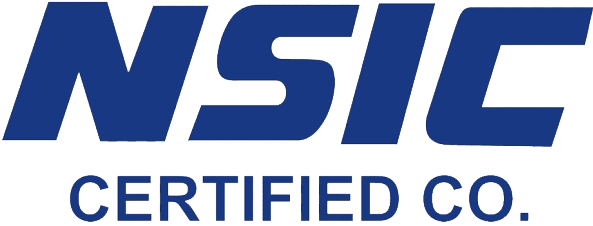Hold on — before you sign up or stake your first buy-in, here’s what actually helps: a clear mapping of tournament types, a handful of bankroll rules you can use tonight, and the simple maths that separates hopefuls from regulars. Short and useful.
This guide gives real, actionable takeaways up front: (1) which tournament formats suit different bankroll sizes and play styles, and (2) the betting basics you need to place smarter, smaller-risk bets (odds conversion, implied probability, and a conservative staking method). Read these two paragraphs again if you like lists — they’re your takeaways.

Types of Poker Tournaments — what they are and when to play
Quick observation: tournament flavours matter more than the buy-in itself. Seriously.
Here’s a short taxonomy with practical notes and sample math. I’ll give examples based on realistic fields and you’ll be able to match them to your bankroll and goals.
1. Multi-Table Tournament (MTT)
What: Large-field events (dozens → thousands of entrants) with fixed buy-ins and escalating blinds.
- Variance: Very high — payouts concentrate at the top 10% and especially the final table.
- Bankroll rule: 200–1000 buy-ins for a serious MTT regimen (larger fields → more buy-ins required).
- Practical example: $50 buy-in MTT. Recommended bankroll = 200 × $50 = $10,000 (conservative).
- Timeframe: Expect multi-hour to all-day sessions. Fatigue matters.
2. Sit & Go (SNG)
What: Single-table tournaments that start once enough players register (commonly 6 or 9). Faster and less swingy than big MTTs.
- Variance: Moderate.
- Bankroll rule: 50–200 buy-ins depending on structure (hyper-turbo vs. deep stacked).
- Example: For $20 9-player SNGs, a 100-buy-in bankroll = $2,000.
3. Turbo & Hyper-Turbo
What: Faster blind levels; pushes aggression and short-stack play.
- Good for: Short sessions; requires strong push-fold skills.
- Bankroll rule: Slightly higher variance — add 25–50% to base bankroll estimate.
4. Freerolls
What: Free entry, real payouts. Great for learning and occasionally cashing out if you’re patient.
- Value: Low EV for serious players (massive fields), but zero-risk practice.
- Tip: Use freerolls to practice endgame bubble and ICM (independent chip model) situations.
5. Satellites
What: Win an entry to a higher buy-in event. Efficient path to big tournaments if you can navigate variance.
- Math note: If a $100 satellite awards a $1,000 seat to 1 of 10 entrants, expected seat value ≈ $100 (but target EV depends on your ability to convert seats into cash).
- Strategy: Satellites reward solid ICM and survival play.
6. Knockout / Bounty Tournaments
What: Part of a player’s buy-in funds a bounty paid when you eliminate someone.
- Strategy: Bounty consideration changes optimal calling ranges (you can accept slightly more risk to capture bounties).
- Calculation: When estimating pot odds, include bounty value as extra equity.
7. Heads-Up & Shootouts
What: Heads-up tests one-on-one skill; shootouts are multiple single-table winners progressing through rounds.
- Shootouts: use similar bankroll guidance to SNGs but factor in opponent skill variance per round.
Mini-case: How many buy-ins do you need? (Real numbers)
My gut says most players underestimate variance. Here’s a straightforward formula and two short cases you can apply tonight.
Formula (conservative): Recommended Bankroll = Buy-in × Suggested Number of Buy-ins
- Low-variance SNG (9-max, standard): Suggested buy-ins = 100 → Bankroll = 100 × Buy-in
- Large-field MTT: Suggested buy-ins = 300–1000 → Bankroll = 300–1000 × Buy-in
Case A: You like $10 SNGs. Conservative bankroll = 100 × $10 = $1,000.
Case B: You want to grind $50 MTTs with 500-player fields. Conservative bankroll = 300 × $50 = $15,000 minimum; treat it like swingy savings.
Sports Betting Basics — the essentials without the fluff
Wait — odds are just a language. Learn to translate them and you can spot value.
Odds formats & quick conversions
- Decimal odds (common in AU): decimal = payout per $1 staked (stake included). Example: 2.50 → implied probability = 1 / 2.50 = 40%.
- American odds: +150 → decimal = (150/100)+1 = 2.50; -150 → decimal = (100/150)+1 = 1.667.
- Fractional (UK): 3/1 → decimal = 3 + 1 = 4.00.
Implied probability & value
Simple rule: implied probability = 1 / decimal odds. If your assessed chance > implied probability, that’s a value bet.
Example: If you assess a team’s true chance at 50% but the market gives decimal 2.50 (implied 40%), expected value is positive.
Kelly in plain English (fractional Kelly)
Use fractional Kelly (e.g., 1/4 Kelly) to manage growth and reduce ruin risk.
Kelly formula (simplified): f* = (bp − q) / b where b = decimal odds − 1, p = your probability estimate, q = 1 − p.
Example: decimal 2.50, b = 1.5. If p = 0.50, q = 0.50 then f* = (1.5×0.5 − 0.5)/1.5 = (0.75 − 0.5)/1.5 ≈ 0.166 → 16.6% of bankroll (full Kelly). Use 1/4 Kelly → ~4%.
Comparison table — poker tournament types vs sports bet types (quick scan)
| Product | Typical Variance | Recommended Bankroll (relative) | Best For |
|---|---|---|---|
| MTT | High | 300–1000× buy-in | Grinders seeking big scores |
| Sit & Go (standard) | Moderate | 50–200× buy-in | Short sessions, steady ROI |
| Turbo / Hyper | Higher | 75–300× buy-in | Fast players, push-fold experts |
| Freeroll | Low (cost) | $0 | Beginners/practice |
| Moneyline (betting) | Moderate | Bankroll % via staking | Straight outcomes |
| Spread / Totals | Lower (if you shop lines) | Use % staking (Kelly/fractional) | Edge via market inefficiencies |
Alright — if you want a single place that combines both a sportsbook and casino environment (so you can practice lines and play tournaments within the same account), many international operators offer both. One example of a platform that blends casino, live-dealer games and sportsbook in a single account is wazambaz.com, which can be handy if you like switching between poker action and simple sports bets without juggling accounts.
Quick Checklist — what to do before you play or bet
- Set a session bankroll and a long-term bankroll. Never mix them.
- Decide your buy-in limits ahead of time (use the buy-in × N rule above).
- For sports bets, convert odds to implied probability and only bet when your estimate is greater.
- Use fractional Kelly or flat staking for sports — avoid full Kelly unless you’re very disciplined.
- Complete KYC early at any site you use — withdrawals get held until verification is done.
- Set deposit/ loss limits and enable self-exclusion options if you feel tilt coming on.
Common Mistakes and How to Avoid Them
- Chasing variance: after a bad beat, reducing bet quality often costs more. Fix: sleep on it; set mandatory cool-downs.
- Ignoring tournament structure: faster blinds require different push/fold thresholds. Fix: review a push-fold chart for your stack size.
- Poor odds math: betting at -150 without converting odds often hides negative EV. Fix: always calculate implied probability.
- Overleveraging on satellites: one seat can be worth a lot, but it’s not guaranteed money. Fix: track conversion rate from seats → cash historically before making satellites core strategy.
- Not reading T&Cs: bonus wagering requirements or max bet rules can block cashouts. Fix: read the payout/bonus section before claiming.
Mini-FAQ
How many live tournaments should I play before I expect ROI?
Short answer: hundreds. Longer answer: tournament ROI fluctuates wildly in small samples. Track results over 500+ entry-equivalents to judge whether your strategy is profitable. Use database software or simple spreadsheets to track ROI per structure.
Is Kelly mandatory for sports betting?
No — but it’s a useful framework. Fractional Kelly (25%–50%) balances growth and drawdown. Many recreational bettors prefer flat stakes (same unit size) for simplicity and emotional control.
Are online poker tournaments legal in Australia?
Most social poker and private-play sites are fine, but regulated real-money online poker faces restrictions depending on state and federal laws. If you’re in Australia, check local rules and the operator’s licensing/KYC. Never use methods to circumvent regulatory blocks — that exposes you to legal and financial risk.
18+ only. Gambling can be harmful — set limits and seek help if you feel your gambling is out of control. In Australia, useful resources include Gambling Help Online (https://www.gamblinghelponline.org.au) and Lifeline (13 11 14). Know your rights: complete identity verification (KYC) is standard and required before withdrawals; licensed operators will have clear AML and dispute procedures. If in doubt, start with very small stakes and verify withdrawal processes before committing larger sums.
Final practical tips — what I wish I’d known earlier
Here’s the blunt truth: variance will humble you. Be respectful of it. Play the structure that suits your bank rather than the one that looks exciting on the lobby.
Keep records. Seriously — a simple CSV of buy-ins, finishes, and hours played will tell you more than a week of gut feelings. If you’re doing sports, track stake, odds, assessed probability and outcome; calculate edge over time.
One last example: if you enter ten $100 MTTs and cash once for $2,000, you might feel lucky — but your ROI is 1000% on that event and -50% over the series (10 entries = $1,000; cash $2,000 = +$1,000 total = +100% aggregate? Wait — math check matters!). That confusion is exactly why tracking is vital. Be precise.
Good luck, play responsibly, and don’t treat bankroll as entertainment money unless you can afford to lose it.
Sources
- Pinnacle — Betting Resources: Betting Basics and Odds Conversion — https://www.pinnacle.com/en/betting-resources
- ACMA — Online gambling rules and consumer guidance (Australia) — https://www.acma.gov.au
- World Series of Poker — Tournament Rules and Structure (reference for tournament norms) — https://www.wsop.com
About the Author
Alex Murphy, iGaming expert. Alex has ten years’ experience playing and analysing online poker and sports markets, with a focus on practical bankroll management and responsible play. He writes to help beginners avoid the common math and psychology traps that cost money.










